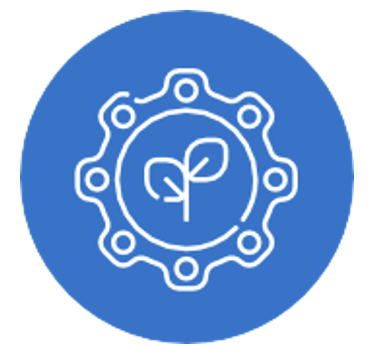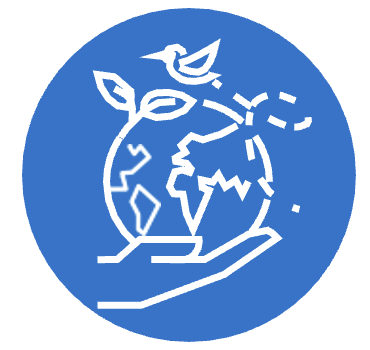
Innovation: Vision, Intent and Strategy
Vision
Promote a sustainable service of Aqualia in holistic water management, by encouraging innovative solutions that minimize environmental impact and maximize service quality for people. Develop and use advanced intelligent management tools to obtain eco-efficient results that allow to achieve the UN Sustainable Development Goals (SDGs), to exceed legal requirements, and to anticipate future regulations.
Our Intent: Innovation to take care of the planet
The water sector is facing an imminent tightening of legal requirements, with the approval of the revision of the European Wastewater Treatment Directive (5 November 2024), the new European Regulation on Water Reuse 2020/741 and its transposition through the Royal Decree 1085/2024 (22 October), and the Drinking Water Directive (EU) 2020/2184, which came into force on 12 January 2023.
Considering this demanding regulatory scenario, innovation is essential to ensure the sustainability of facilities and services throughout the end-to-end water cycle. To meet the new requirements and address climate, technological, digital, and social challenges, Aqualia's open innovation is a key driver that engages both internal staff and external stakeholders.
At Aqualia, we have long acknowledged the importance of innovation in addressing the main challenges of our time and we have internalised this throughout the organisation. Our Innovation and Technology Department (ITD) works—in collaboration with others both inside and outside the company—to spot opportunities, develop innovative solutions, and implement and transfer knowledge.
The transfer of R&D+i knowledge from Aqualia to production is also an essential part of our sustainability strategy. To this end, the Innovation and Technology Department works alongside production and engineering teams in adapting plants and implementing alternative solutions for water sourcing, as well as for eco-efficiency and smart water management throughout the end-to-end water cycle.
R&D+i Strategy: innovation and cooperation in the face of challenges
Our R&D+i strategy focuses on identifying opportunities and developing and implementing innovative solutions to address the environmental, social, technological, and legislative challenges associated with the management of the end-to-end water cycle. Internal and external collaboration is key to the effective transfer of knowledge that drives innovation at Aqualia and its contribution to sustainable development.
This vision is built around two pillars that are deployed throughout the end-to-end water cycle: eco-efficiency and sustainability.
 ECO-EFFICIENCY
ECO-EFFICIENCY
Following the principles of the circular economy with efficient management of natural resources and the recovery of raw materials. OBJECTIVES:
- Develop advanced technologies that optimise the use of renewable resources.
- Avoiding the generation of waste in the company's processes and services.
- Search for solutions that allow growth in all wa-ter markets in accordance with eco-efficiency requirements.
 SUSTAINABILITY
SUSTAINABILITY
Minimising energy consumption, avoiding pollution in an just social environment and protecting the climate and nature. OBJECTIVES:
- Development of cutting-edge technologies that promote the sustainability of the company whilst protecting the environment and biodiversity.
- Improved energy efficiency in the company's solu-tions and services.
- Revaluation of by-products from the end-to-end water cycle.
Following European policies as a roadmap, we work and develop solutions across six areas of action with multiple projects.
Sustainable wastewater treatment: These solutions based on nature offer low-cost options with excellent performance in line with European regulations on treatment of urban wastewater.
Alternative resources: Reuse, water treatment and desalination: Faced with the problem of water stress, purification and reuse of wastewater adapted to the size of the population and the water quality required by regulations.
Sustainability and energy efficiency: Harnessing wastewater as an energy source and exploring other renewable alterntives, such as transformation of organic matter into bioenergy (biomethane, hydrogen) in WWTPs.
Circular economy, eco and bio-factories: Solutions for the use of waste and transformation of WWTPs into eco and bio-factories that minimise consumption of energy and reagents, reduce waste production, and generate new products.
Digital developments: Advanced technology to improve water cycle management: Internet of Things, interconnection of multiple sensors, data analysis, AI. This combination of elements allows for early problem detection, rapid response, and process optimisation.
Industrial water: Industrial activity must be increasingly sustainable: we provide solutions so that our industrial clients can adapt the use of water in their processes and optimise the treatment of their effluents.
Aqualia's innovation lines of work are supported by the United Nations Sustainable Development Goals (SDGs), where particular emphasis is placed on affordable and high-quality water supply and sanitation services (SDG 6), optimised energy balance (SDG 7), as well as responsible production and consumption (SDG 12) without affecting the climate (SDG 13).
Implementation of Innovation
7P Methodology
To manage work and optimize results, the activities of the Innovation and Technol-ogy Department are structured into work phases that dynamically feed back into each other.
- Planning (Management System): Based on the ISO 56001 standard, the key elements of R&D activity are defined: objectives, indicators, and procedures.
- Preparation (Creativity and Idea Generation): The creation of ideas is supported by external and internal sources of knowledge, analyzing and select-ing priorities most aligned with customer and production needs.
- Proposals (Select, Prioritize, Present): Based on needs and priorities, opportunities to develop proposals are determined, as well as the best collaborators and partners, in cooperation with Aqualia's production areas.
- Projects (Organize, Implement, Justify): To succeed over time according to the planned resources, work teams and deliverables are managed according to contractual requirements, involving our partners in technology development and the im-plementation of demonstration sites.
- Products (Define, Develop, Optimize, Transfer): To adapt the results to the market and optimize their returns, stakeholders are involved from the begin-ning in the technological transfer of the developments.
- Property (Description, Protection, Patents, Maintenance): To exploit the results with maximum guarantees, the generated knowledge and intellectual property are protected.
- Promotion (Brands, Market Identification, and Access Channels): To facilitate recognition, products are differentiated with attractive names, and external support is sought to define and quantify the market and introduce solutions.




